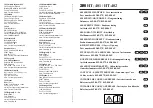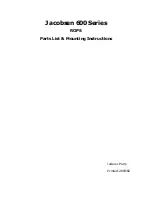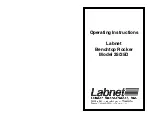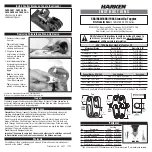
Tel: +43 316 257-0
Created on 12 December 2012
C72IB006EN-A
Lovis 2000 M/ME Low Volume – SOP
Standard Operating Procedure for Low Sample Volume
TIP:
If this cleaning method does not yield satisfactory results, brush the short capillary with the
supplied brush.
Cleaning the ball
TIP:
Do not handle balls with bare fingers! Finger prints influence the measurement results. If using the
plastic tweezers also clean them to avoid contaminating a clean ball with sample residues.
1. Put the ball into some cleaning liquid.
2. Put the ball onto a piece of tissue paper using the plastic tweezers.
3. Fold a bit of tissue paper over the ball. Wet it with some cleaning
liquid. Rub the ball with the tissue paper and one finger. Wear
protective gloves if required.
4. Rinse the ball with some more cleaning liquid and let it dry on
tissue paper.
Cleaning the microliter glass syringe and hollow needles
Always clean the syringe and needles to avoid contaminating one sample with another one.
TIP:
Handle the microliter syringe with care to avoid damaging this precision tool. Pull the plunger only
as far out as the µL-scale. Do not use strongalkaline cleaning liquids that will corrode the glass.
1. Empty the syringe into a waste vessel.
2. Draw in some cleaning liquid through the hollow needle and move the plunger up and down
repeatedly. If necessary wait a bit for the cleaning liquid to mix with the sample. Empty the
syringe into a waste vessel.
3. Repeat the above step two to three times until no traces of sample are left. Wipe the hollow
needle with tissue paper.
4. If necessary, repeat the procedure with a second cleaning liquid.
5. Remove the hollow needle.
6. Pull the plunger up a bit and let the syringe air-dry.
7. Dry the hollow needle with tissue paper. Blow it dry with the built-in air pump (see above, how to
dry the short capillary, point 15., p. 8).
Brushing short capillaries
1. Fill some cleaning liquid into the capillary (2) with a
syringe (5) with a hollow needle (6).
2. Push a supplied brush (12) as far as possible into the
capillary and rotate it. Move it up and down repeatedly.
3. Pull the brush out again and rinse it with cleaning
liquid. Rinse the capillary as described above.
4. If necessary, repeat the procedure.
5. Dry the short capillary with the built in air-pump
.
6. Rinse the brush and wipe it with tissue paper.
TIP:
For hard-to-remove samples, soak all items in some
cleaning liquid first.
6
5
2
12



























